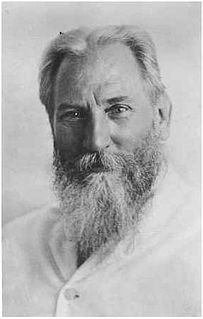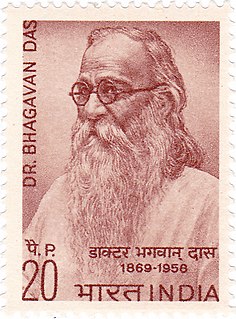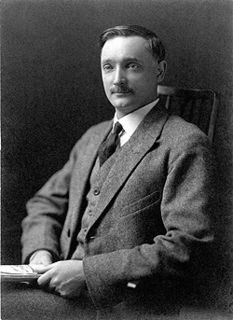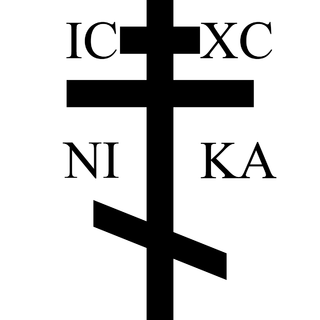
The Theosophy Society – Adyar is the name of a section of the Theosophical Society founded by Helena Petrovna Blavatsky and others in 1882. In that same year, its headquarters moved with Blavatsky and president Henry Steel Olcott from New York to Adyar, an area of Chennai, India. The designation 'Adyar' is added to make it clear that this is the Theosophical Society headquartered there, after the American section and some other lodges separated from it in 1895, under William Quan Judge.

William Quan Judge was an Irish-American mystic, esotericist, and occultist, and one of the founders of the original Theosophical Society. He was born in Dublin, Ireland. When he was 13 years old, his family emigrated to the United States. He became a naturalized citizen of the USA at age 21 and passed the New York state bar exam, specializing in commercial law.

The Theosophical Society, founded in 1875, is a worldwide body with aim to advance the ideas of Theosophy in continuation of previous Theosophists, especially that of the Greek and Alexandrian Neo-Platonic philosophers dating back to 3rd century AD. It also encompasses wider religious philosophies like Vedānta, Mahāyāna Buddhism, Qabbalah, and Sufism. The Theosophical Society functions as a bridge between East and West, emphasizing the commonality of human culture.

Annie Besant was a British socialist, theosophist, women's rights activist, writer, orator, educationist, and philanthropist. Regarded as a champion of human freedom, she was an ardent supporter of both Irish and Indian self-rule. She was a prolific author with over three hundred books and pamphlets to her credit. As an educationist, her contributions included being one of the founders of the Banaras Hindu University.

Charles Webster Leadbeater was a member of the Theosophical Society, author on occult subjects and co-initiator with J. I. Wedgwood of the Liberal Catholic Church.

The Theosophical Society (Pasadena) is a branch of Theosophy based in Pasadena, California. It claims to be the successor organization to the original Theosophical Society founded by Helena Petrovna Blavatsky and others in 1875 in New York City. Currently is the second largest Theosophical group in members and international reach after the Theosophical Society Adyar.

Bhagwan Das was an Indian Theosophist and public figure. For a time he served in the Central Legislative Assembly of British India. He became allied with the Hindustani Culture Society and was active in opposing rioting as a form of protest. As an advocate for national freedom from the British rule, he was often in danger of reprisals from the Colonial government. He was awarded the Bharat Ratna in 1955.

The Theosophical Society in America (TSA) is a member-based nonprofit organization dedicated to the teaching of Theosophy and affiliated with the international Theosophical Society based in Adyar, Chennai, India. The name "Theosophical Society in America" was legally adopted by the American Theosophical Society in 1934. Previously, other organizations had used the same name during the years 1895–98 and 1898–1908.

Morya is one of the "Masters of the Ancient Wisdom" within modern Theosophical beliefs. He is one of the Mahatmas who inspired the founding of the Theosophical Society and was engaged in a correspondence with two English Theosophists living in India, A. P. Sinnett and A. O. Hume. The correspondence was published in 1923 by A. Trevor Barker, in the book The Mahatma Letters to A. P. Sinnett.

Radha Burnier was born in Adyar, India. She was president of the Theosophical Society Adyar from 1980 until her death in 2013. She was General Secretary of the Indian Section of the Society between 1960 and 1978, and was previously an actress in Indian films and Jean Renoir's The River.
Nilakanta Sri Ram or Nilakantha Sri Ram was a freemason, theosophist and president of the Theosophical Society Adyar during twenty years.

The term Neo-Theosophy is a term, originally derogatory, used by the followers of Blavatsky to denominate the system of Theosophical ideas expounded by Annie Besant and Charles Webster Leadbeater following the death of Madame Blavatsky in 1891. This material differed in major respects from Blavatsky's original presentation, but it is accepted as genuinely Theosophical by many Theosophists around the world.

Ernest Egerton Wood was a noted English yogi, theosophist, Sanskrit scholar, and author of numerous books, including Concentration – An Approach to Meditation, Yoga and The Pinnacle of Indian Thought (1967).

The Coulomb Affair was a conflict between Emma and Alexis Coulomb, on one side, and Helena Blavatsky and the Theosophical Society, on the other.

In Theosophy, Maitreya or Lord Maitreya is an advanced spiritual entity and high-ranking member of a hidden Spiritual Hierarchy, the Masters of the Ancient Wisdom. According to Theosophical doctrine, one of the Hierarchy's functions is to oversee the evolution of humankind; in accord with this function Maitreya is said to hold the Office of the World Teacher. Theosophical texts posit that the purpose of this Office is to facilitate the transfer of knowledge about the true constitution and workings of Existence to humankind. Humanity is thereby assisted on its presumed cyclical, but ever progressive, evolutionary path. Reputedly, one way the knowledge transfer is accomplished is by Maitreya occasionally manifesting or incarnating in the physical realm; the manifested entity then assumes the role of World Teacher of Humankind.

Theosophy is a religion established in the United States during the late nineteenth century. It was founded primarily by the Russian immigrant Helena Blavatsky and draws its teachings predominantly from Blavatsky's writings. Categorized by scholars of religion as both a new religious movement and as part of the occultist stream of Western esotericism, it draws upon both older European philosophies such as Neoplatonism and Asian religions such as Hinduism and Buddhism.

Christianity and Theosophy, for more than a hundred years, have had a "complex and sometimes troubled" relationship. The Christian faith was the native religion of the great majority of Western Theosophists, but many came to Theosophy through a process of opposition to Christianity. According to professor Robert S. Ellwood, "the whole matter has been a divisive issue within Theosophy."

"What Are The Theosophists?" is an editorial published in October 1879 in the theosophical magazine The Theosophist. It was compiled by Helena Blavatsky and it was included the 2nd volume of the Blavatsky Collected Writings.

Hinduism is regarded by modern Theosophy as one of the main sources of "esoteric wisdom" of the East. The Theosophical Society was created in a hope that Asian philosophical-religious ideas "could be integrated into a grand religious synthesis." Prof. Antoine Faivre wrote that "by its content and its inspiration" the Theosophical Society is greatly dependent on Eastern traditions, "especially Hindu; in this, it well reflects the cultural climate in which it was born." A Russian Indologist Alexander Senkevich noted that the concept of Helena Blavatsky's Theosophy was based on Hinduism. According to Encyclopedia of Hinduism, "Theosophy is basically a Western esoteric teaching, but it resonated with Hinduism at a variety of points."
Josephine Maria Ransom, née Davies (1879-1960) was an Australian Theosophist and writer. She served as General Secretary of three different national sections of the Theosophical Society, and wrote A Short History of the Theosophical Society. Ransom was also Honorary Secretary of the Britain and India Association, and editor of its magazine Britain and India.













